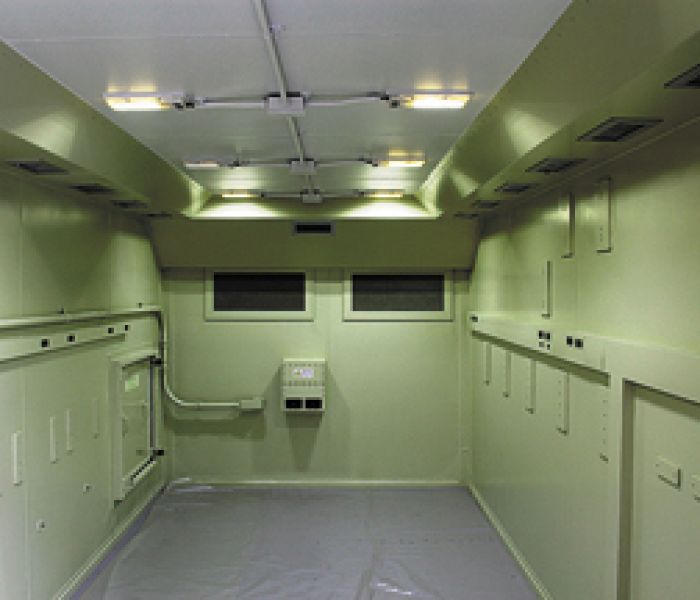Based on the use of 20-foot ISO shelters in some of their systems, PD TMDE was asked to serve as the project sponsor and requirements provider for an Army Research Laboratory project to research and develop a new shelter for the Army constructed of composite material. The program, called the C-4 shelter, resulted in a lightweight, corrosion resistant shelter that is lightweight and promotes energy efficiency. A lighter-weight shelter with improved insulation and other energy efficient characteristics greatly reduces transportation and operating expenses. ARL with the assistance of Natick Shelters Technology, Engineering and Fabrications Directorate ensured the shelters met current and future requirements for government use. The C-4 shelter is composed mostly of carbon, epoxy and fiberglass material with very little dependence upon metal except for the exterior ISO corners. Two types of shelters were built − one with an 80db Electromagnetic Interference/High Altitude Electromagnetic Pulse shielding and the other unshielded.
The shielding proved to be superior to the shielding of previously acquired shelters providing protection of valuable electronics in the event of an electromagnetic attack. Even though 40 percent lighter than aluminium and steel shelters presently in use, the composite shelters have a greater strength per unit density than aluminium and steel giving it a superior strength to weight ratio. The C-4 shelters have a tare weight of 5,760 pounds with a maximum payload of 14,240 pounds. The C-4 shelters have passed the International Convention for Safe Containers certification. Shelter temperature is controlled by standard environmental control units and use LED lighting instead of florescent or incandescent which can be dimmed or changed to a blackout colour.
The C-4 shelter built has a thermal resistance value of R-8 which far exceeds the ASTM standard of R-2.86. Shelter service life is estimated to be 30 years with lower maintenance costs; much of the shelter is field repairable. The shelter includes replaceable/repairable ISO corners and forklift pockets using hardware attachable components. This is a feature not found on any other ISO containers which is a major savings in cost and time in a depot.



Comments